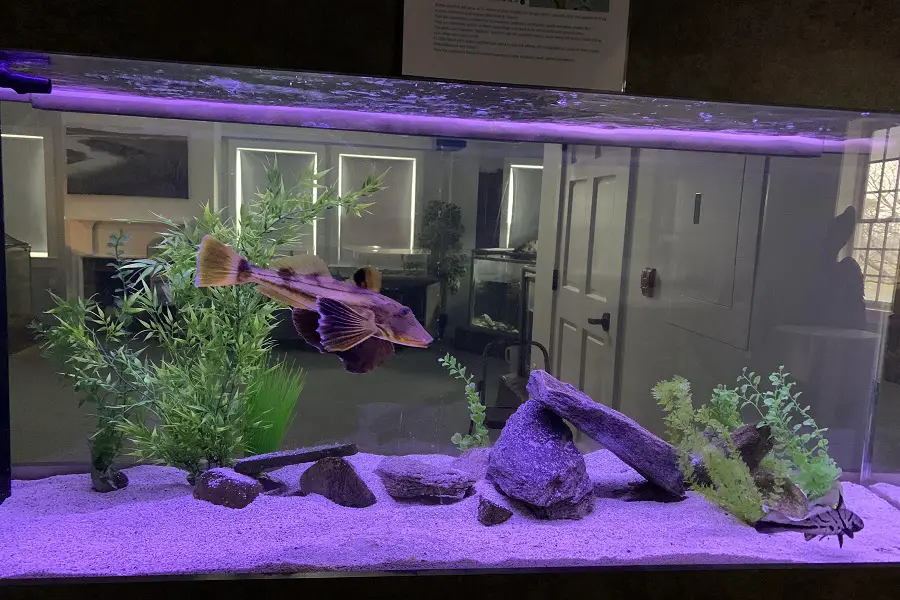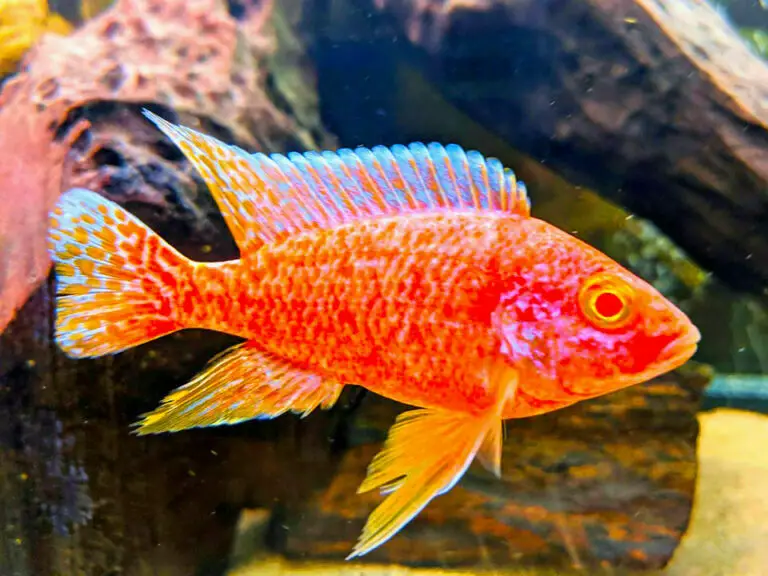How Often to Change Fish Tank Filter: The Ultimate Guide
Change your fish tank filter every two weeks to maintain a clean and healthy environment. Neglecting filter changes can result in poor water quality and sick fish.
Fish keeping is a relaxing and low-maintenance hobby that is enjoyed by millions of people worldwide. While it may seem easy to just throw a few fish in a tank and fill it with water, there are many important factors to consider to keep your fish happy and healthy. One of the most critical aspects is maintaining a proper filtration system.
Filters help to remove debris and waste that can accumulate in the tank and can seriously harm your fish if left unchecked. But how do you know when to change your filter? How often you should change your fish tank filter and why it’s essential for the wellbeing of your aquatic pets.

Credit: sevenports.com
Factors That Affect The Frequency Of Filter Changes
Maintaining the cleanliness of a fish tank is paramount to ensure healthy aquatic life. A working filter plays a crucial role in keeping the water free from waste and debris. However, different factors influence how often you need to change your fish tank’s filter.
Types Of Filters And Their Lifespan
Different types of filters have varying lifespans. Understanding what type of filter you have and its lifespan is essential in determining when to replace it.
- Hang-on-back filters, which require a replacement every two to four weeks
- Internal filters, which require a replacement every four to six weeks
- Canister filters, which need replacement every four to six weeks
- Sponge filters, which require cleaning every two to three weeks
Tank Size And Stocking Level
The size of your fish tank and the number of fish you have in it are two significant factors in determining when to change the filter. Larger tanks tend to have more water and, therefore, can accommodate a larger filter that lasts longer.
On the other hand, a heavily stocked aquarium will generate more waste, which requires more frequent filtration.
- A small tank would typically require frequent filter changes, approximately once a week.
- Medium-sized tanks require a filter change every two to three weeks.
- Large tanks can go up to six weeks before requiring a filter change.
Feeding Schedule And Type Of Food
The type of food you give to your fish and the frequency of feeding are crucial in determining how quickly the filter becomes clogged. Overfeeding contributes to waste accumulation, while underfeeding results in a lack of biological filtration and poor water quality.
- Feeding schedules that involve small meals multiple times a day can ensure that the fish consume all the food and result in less waste accumulation.
- Choosing high-quality food that is easy to digest by the fish ensures that less waste is generated.
Water Temperature, pH, And Hardness
Water conditions play a vital role in regulating the frequency of filter changes. Higher temperatures tend to increase waste production and biological activity, which means more frequent filtration. Similarly, acidic water or hard water can impact the filter’s lifespan.
- Ensure that the aquarium water is kept at a stable temperature that is suitable for the fish and plants.
- Test your water regularly to ensure that the ph and hardness levels are within the recommended range.
The frequency of filter changes in a fish tank depends on various factors such as the filter type, tank size, stocking level, feeding schedule, and water conditions. Regular maintenance, such as testing the water and cleaning the filter, is critical in ensuring a healthy aquatic environment.
Signs That Indicate The Need For A Filter Change
If you own an aquarium, maintaining it can be a challenging task. One of the essential things to keep in mind is to change your fish tank filter regularly. A filter is essential to keep your fish healthy and promote a clean, healthy environment for them to survive.
But, how often should you change it? As a general rule, you should replace the fish tank filter at least once a month. However, there are some signs that indicate that you may need to replace it earlier.
Cloudy Or Murky Water
Cloudy or murky water is a sign that your fish tank filter may be clogged. Once you notice this, it is essential to change the filter as soon as possible. The filter may no longer be collecting debris and waste from the tank efficiently.
As a result, it can lead to an overgrowth of bacteria and algae, which can be harmful to your fish.
Foul Odor
Another sign that you need to change your fish tank filter is if your aquarium has a foul odor. A bad smell may indicate that the filter is unable to maintain and clean the water properly. It can cause the buildup of harmful toxins and fecal matter in the tank.
If you notice a bad smell, it’s necessary to replace the filter immediately to avoid potential problems that can harm your fish.
Reduced Water Flow
One of the easiest signs to notice is reduced water flow in the aquarium. If you see a decline in the water flow, your filter may be clogged with debris and waste material and losing its effectiveness. Furthermore, if you continue to use a filter that is not working correctly, your fish can become sick, and the tank can become contaminated.
Obvious Particles Or Debris In The Tank
Apart from the signs mentioned above, another obvious sign is the presence of visible particles or debris in the tank. Pieces of uneaten food, fecal matter, and other wastes can accumulate in the filter. Over time, this buildup can slow down its filtration system and make it ineffective.
Additionally, they can harm the fish and cause health problems.
Keeping your fish tank clean is crucial for the survival of your aquatic friends. Luckily, changing the filter occasionally is a simple but necessary step to ensure a healthy environment for your fish to thrive. By paying attention to the signs mentioned above, you can ensure a healthy and happy home for your aquatic friends.
Clean Your DISGUSTING Aquarium Filter, When, How And Why?
How Often To Change Fish Tank Filter? General Guidelines:
Recommendations From Experts And Industry Standards
Maintaining a clean fish tank is essential to ensure the health and well-being of your aquatic pets. Experts suggest that changing the filter every two to four weeks is a standard frequency to keep the water quality in check. The general rule of thumb is to replace about 10% to 20% of the water during each filter change.
However, this may vary depending on the type and level of stocking in the tank.
Example Filter Change Schedules For Different Tank Sizes And Stocking Levels
The frequency of filter changes for different tank sizes and stocking levels differ based on fish species, feeding habits, and the number of fish.
- Small tank (5-10 gallons) with one or two fish: change the filter once a month.
- Medium tank (20-30 gallons) with three to five fish: change the filter every two weeks.
- Large tank (50 gallons or more) with six or more fish: change the filter every week.
It’s important to note that these are just guidelines, and factors such as water quality, filter type, and individual fish’s health also play a role in determining the frequency.
Factors To Consider When Adjusting The Filter Change Frequency
As mentioned earlier, several factors could affect the frequency of replacing the filter in your fish tank.
- Number of fish in the tank
- Feeding habits and amount of food given
- Individual needs of the fish species
- The filter’s age and quality
- Water quality and stability
- Biological load in the tank
By closely monitoring these factors, you can adjust the frequency of changing the filter accordingly to maintain a clean and healthy environment for your fish.
It’s crucial to keep your filter clean to make sure it functions correctly and efficiently. Hopefully, this guide helped give you a general idea of how often you should replace your fish tank filter. If you’re still not sure, seek advice from a professional or a local fish store.
DIY Fish Tank Filter Maintenance Tips
Maintaining a fish tank involves more than just feeding your aquatic pets. One of the most critical aspects of fish tank maintenance is changing the filter. A filter’s primary purpose is to remove impurities from the water, but it can only do so for a limited time before it becomes clogged.
A clogged filter will be inefficient at removing impurities, therefore potentially harming your fish. As a result, it is critical to understand when and how to change your fish tank filter. In this blog post, we’ll cover all you need to know about changing your fish tank filter, with specific emphasis on diy fish tank filter maintenance tips.
Step-By-Step Instructions On How To Clean A Filter
Fish tank filter cleaning should be done once a month. Cleaning the filter involves taking it apart carefully to remove any clogs and debris.
- Turn off the filter and remove it from the fish tank.
- Disassemble the filter carefully to remove the filter medium.
- Rinse the medium thoroughly under cold running water. Avoid using any cleaning solutions.
- Use a brush or sponge to clean the filter housing, rotors, and impellers. Be gentle while cleaning these parts; do not use too much force.
- Rinse all of the pieces with cold running water.
- Reassemble the filter and place it back in the fish tank.
Alternative Methods To Extend The Life Of A Filter
Cleaning the filter regularly is the best technique to lengthen its lifespan.
- Use a pre-filter or a filter floss. These filter inserts are a fantastic approach to prolong the life of your filter. They collect debris before they reach the primary filter, helping to avoid clogs.
- Do not overfeed your fish, as uneaten fish food can result in debris.
- Use live plants, as they assist in removing nitrates from the tank, decreasing the concentration of impurities in the water.
DIY Filter Media Replacement Options
Filter media needs to be replaced for optimal filter efficiency.
- Poly-fil (polyester fiberfill) is a low-cost option. It is the same stuffing used in cheap pillows and can be purchased at a local store at a low cost.
- Sponge filters are an excellent option for removing debris and promoting beneficial bacteria growth.
- Ceramic filter media is a costly but long-lasting option, with a high degree of efficacy.
Maintaining a fish tank requires time and hard work, but it’s all worth it to keep your aquatic pets happy and healthy. We hope that this article has helped you understand the importance of cleaning your fish tank filter and has provided practical tips to help you do so.
Be sure to follow the steps above for easy and effective cleaning, to extend your filter’s lifespan with alternative methods, and to choose suitable filter media replacements.
Frequently Asked Questions:
How Often Should I Change My Fish Tank Filter?
It’s generally recommended to change the filter on your fish tank at least once a month. However, the frequency ultimately depends on the size of your tank, the number of fish and plants in it, and the type of filter you use.
Monitoring the water quality is the best way to determine how often you should change your filter.
What Happens If I Don’t Change My Fish Tank Filter?
Without regular filter changes, debris and waste will accumulate in your tank, leading to poor water quality, unhealthy fish, and potential bacterial growth. This can also result in algae blooms, foul odors, and even tank crashes if left unaddressed for too long.
To maintain a healthy environment for your aquatic pets, it’s essential to keep up with regular filter maintenance.
How Do I Know When To Change My Fish Tank Filter?
Aside from monitoring water quality, certain signs can suggest it’s time to change your filter. If the water starts to look cloudy, there’s a strong odor, or your fish are acting lethargic, it could be a sign that the filter isn’t functioning correctly.
Additionally, if the filter media looks dirty or clogged, it’s likely time for a replacement.
Can I Clean My Fish Tank Filter Instead Of Replacing It?
Yes, it’s possible to clean your fish tank filter instead of replacing it entirely. However, keep in mind that over-cleaning can also be harmful as it can disrupt the beneficial bacteria that live in the filter media. Instead, it’s recommended to clean the filter media in a bucket of old tank water and replace a third of it every time you perform a water change.
Conclusion
Maintaining a healthy and vibrant aquatic environment is crucial for the wellbeing of your fish. Changing the fish tank filter regularly plays a significant role in ensuring that the water remains clean and healthy. Remember to establish a routine based on the type of fish, the number of fish, and size of the aquarium.
Though the frequency of filter changes may vary, it is recommended to change them once every four to six weeks. Regular filter replacement ensures that the water quality remains pristine, the fish remain healthy and happy, and the aquarium has a long lifespan.
Keeping track of filter schedules and investing time and effort in maintaining a clean and healthy fish tank will create an ideal environment for your fish to thrive in. With these few simple steps, you can maintain a beautiful and thriving aquatic environment in your home with happy and healthy fish.





